Palestine is a treasure chest of agrobiodiversity and a historic center of crop cultivation. As part of the Fertile Crescent, Palestine was identified by Nikolai Vavilov (1926) as one of the eight most important centers of cultivated plant origin and diversity. He listed more than 80 crops from the region, the most important of which are cereal crops, fruit trees, and vegetables. Plants of this country are of greater importance to humankind than those of most other parts of the world. The life-sustaining crops of wheat, barley, vines, olives, onions, vetches, lentils, peas, and legumes all originated within the geographical land of Palestine and were domesticated in the region 10,000 years ago.*1 The wild ancestors of these crops, which now only occur in tiny remnants of natural vegetation, represent a vital resource for future crop breeding and food production.*2
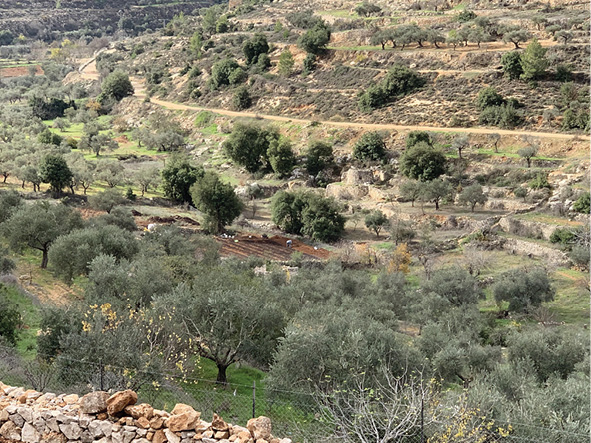
Wild food plants have been part of Palestinian diets and traditional food systems throughout history, providing essential nutrients and bioactive compounds. Palestine is famous for the cultivation of local landraces and for preserving their wild relatives. These species are considered the agrobiodiversity asset and form a significant part of local plant genetic resources, as they are locally domesticated, adapted to the local environment, and evolved in parallel. They have traits for efficient nutrient uptake and utilization as well as useful genes for adaptation to stressful environments such as water stress, salinity, and high temperatures. They show especially important traits for drought and disease resistance. They conserve soil and increase natural soil fertility and health.
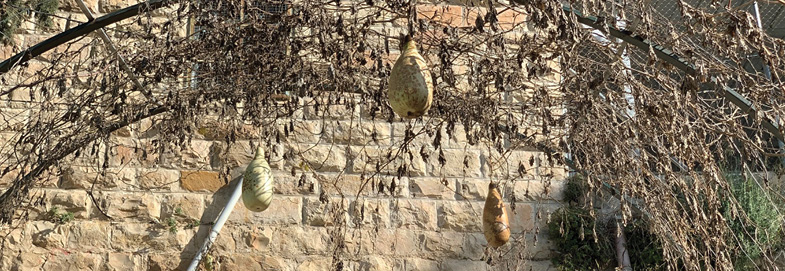
Wild plants are intensively utilized by the local Palestinian community either as medicinal and aromatic plants or as food such as leaves, seeds, spices, resins, and/or dyes, and so on. Rural women carefully collect the fruit, leaves, and roots of native plants from their fields or from the nearby forest for use in the family diet. Many plants are sold at al-a’tareen (herb and spice) shops in the local market. A widespread practice among farmers is to preserve a seed bank at their farms where they save seeds from their crops annually for the following year’s cultivation, such as the seeds of plants of the cucurbitaceous family, including zucchini, pumpkins, and calabash gourds that are usually either stored hanging to dry for the following season, with their seeds taken and cultivated in the following season, or eaten fresh, while their dried skin can be used to produce handicrafts and ornaments.
In Palestine, about 2,076 plant taxa were recorded as native or naturalized. Of the native taxa, 102 were recorded as endemic.*3
Among the wild relatives that were domesticated in Palestine are wheat, lettuce, pear, pistachio, barley, fennel, cauliflower, pea, vetch, wild thyme, and many others. Other plants used as a source of food include spotted arum, white beet, dwarf chicory, rocket, garden purslane, artichoke, mallow, prickly asparagus, gundelia, laurel, watercress, sumac, dandelion, fenugreek seed, and others. Medicinal and aromatic plants include cat thyme germander, coriander, spiny hawthorn, common sage, horse mint, round-leaved mint, wild thyme, cumin, anise, fennel, chamomile, rosemary, and many others.
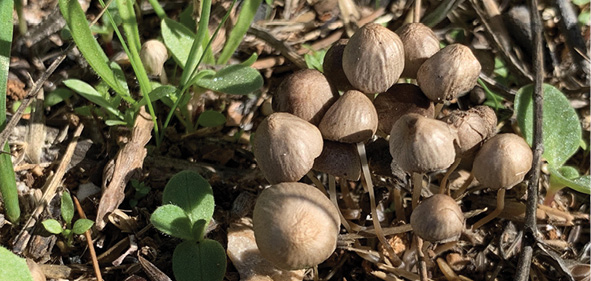
Many wild fruit trees bloom in spring, such as olives, almonds, wild plums, peaches, pears, figs, and medlars, whereas loquats, pomegranates, and others bloom in summer. In the south, acacia trees and the prickly sabra cactus suck moisture from the desert. Atlantic pistachios strike a dramatic note among the dry riverbeds, and date palms grow wherever there is sufficient underground water. All this forms a very important germplasm that needs to be preserved, and the practice itself needs to be promoted among the local population.
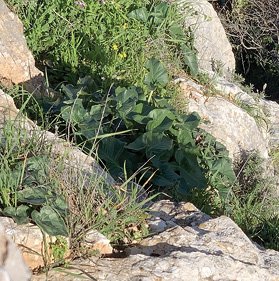
Palestinian arum. 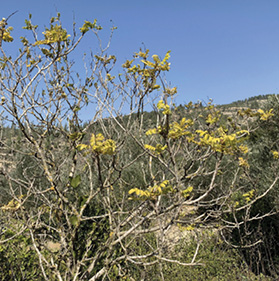
Sumac tree. 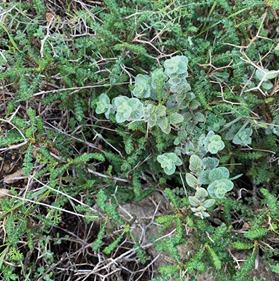
Za’atar, wild thyme. 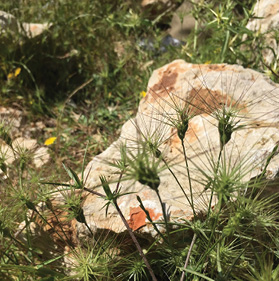
An ancestor of wheat.
The edible wild plants are consumed in many ways according to local traditions. They are eaten raw or cooked and thus require different preparation processes. For instance, several plants, such as mallow and arum, are usually washed, cut, and then mixed with onions and cooked with oil. For other plants, such as fenugreek, soaked seeds are boiled, then the pasted seeds are mixed with semolina, flour, and sugar syrup. People use different methods to preserve plants and food for off-season consumption and for longer periods. In Palestinian rural society, the most common form of preservation is by drying, as is done with sage, mint, germander, and more. Very few economic plant species, such as thyme and gundelia, are now cultivated and marketed by some farmers. This shows that the economic benefits from some species might promote local people’s interest in the conservation and maintenance of such locally important and threatened species.
Palestine’s diverse topography and ecological conditions have permitted the survival of traditional wild plants that are used by locals as food.
It is of utmost importance to gain know-how about popular uses of edible wild plants. In Palestine, these traditions are at risk of disappearing, and hence it is crucial to study such knowledge systems and find innovative ways of transmitting them to future generations.
Article photos by Roubina Bassous/Ghattas.
*1 Daniel Zohary and Maria Hopf, “Domestication of Plants in the Old World: The Origin and Spread of Cultivated Plants in West Asia, Europe, and the Nile Valley,” The Classical Review, Volume 39, Issue 1, 1998, pp. 160–61.
*2 F. Nigel Hepper, Baker Encyclopedia of Bible Plants, InterVarsity Press, 1992.
*3 Roubina Ghattas/Bassous, Biodiversity in the State of Palestine, Chapter 6, “The Status of Environment in the State of Palestine,” Applied Research Institute-Jerusalem (ARIJ), Bethlehem, West Bank, 2015.


